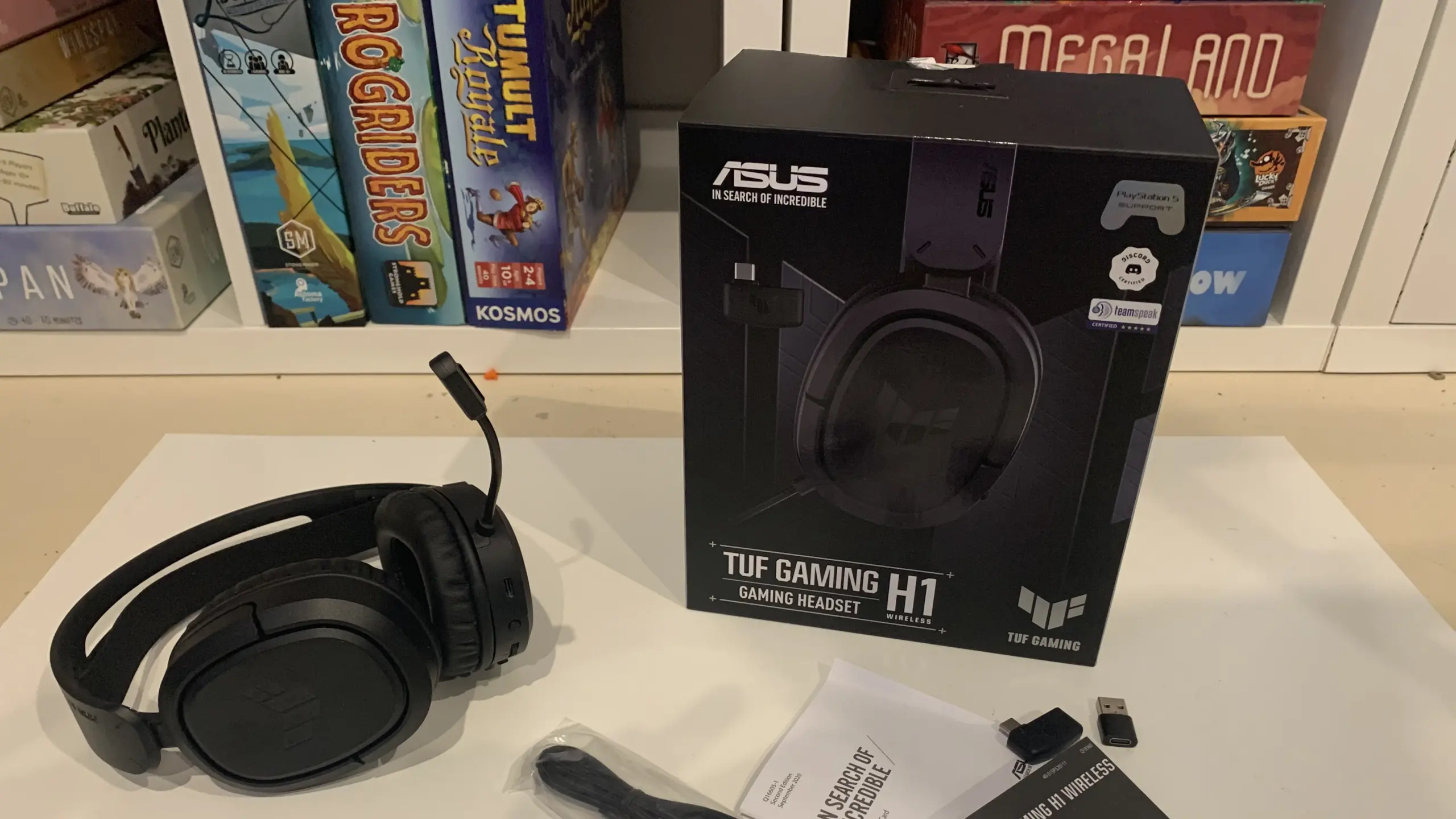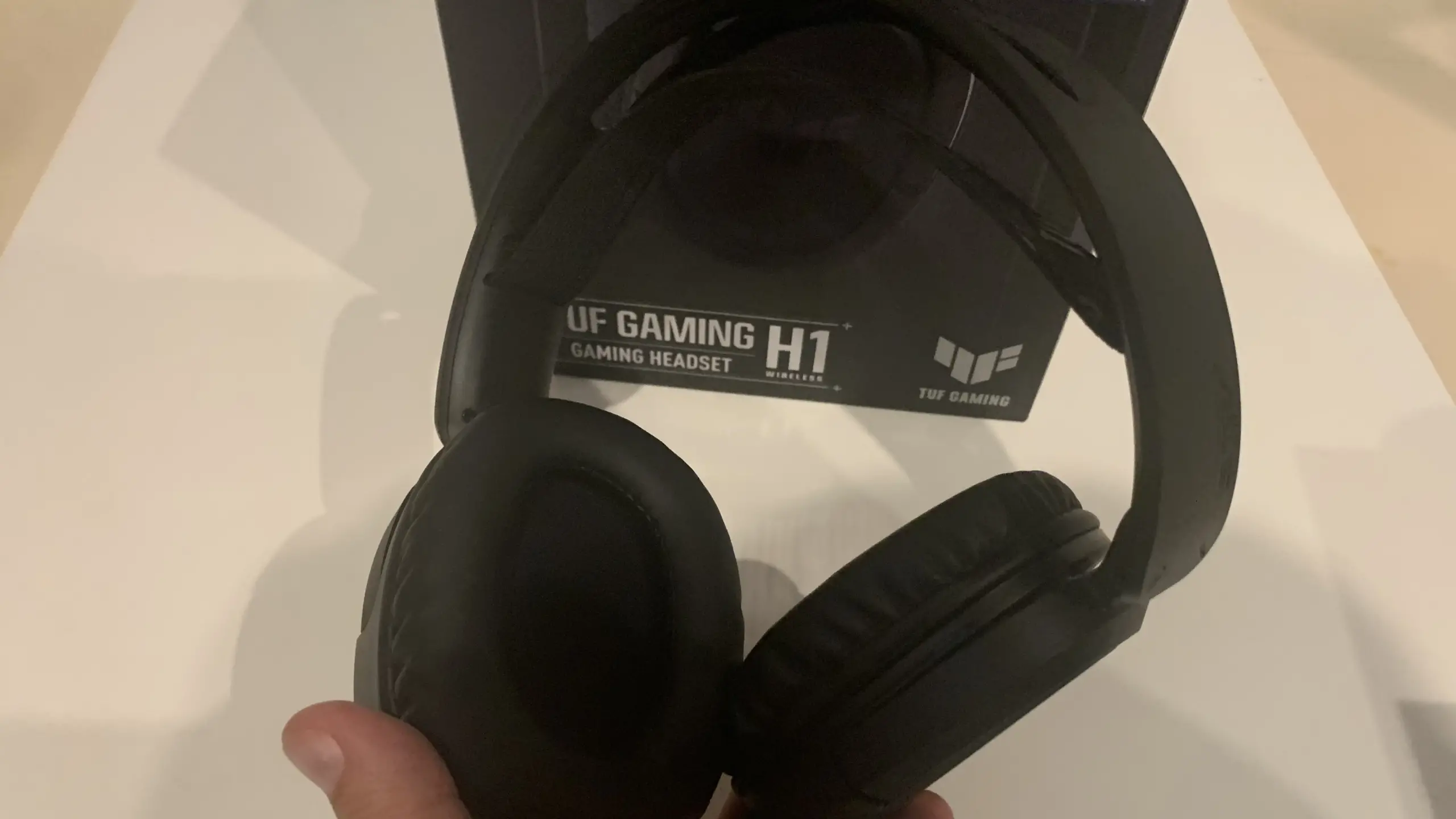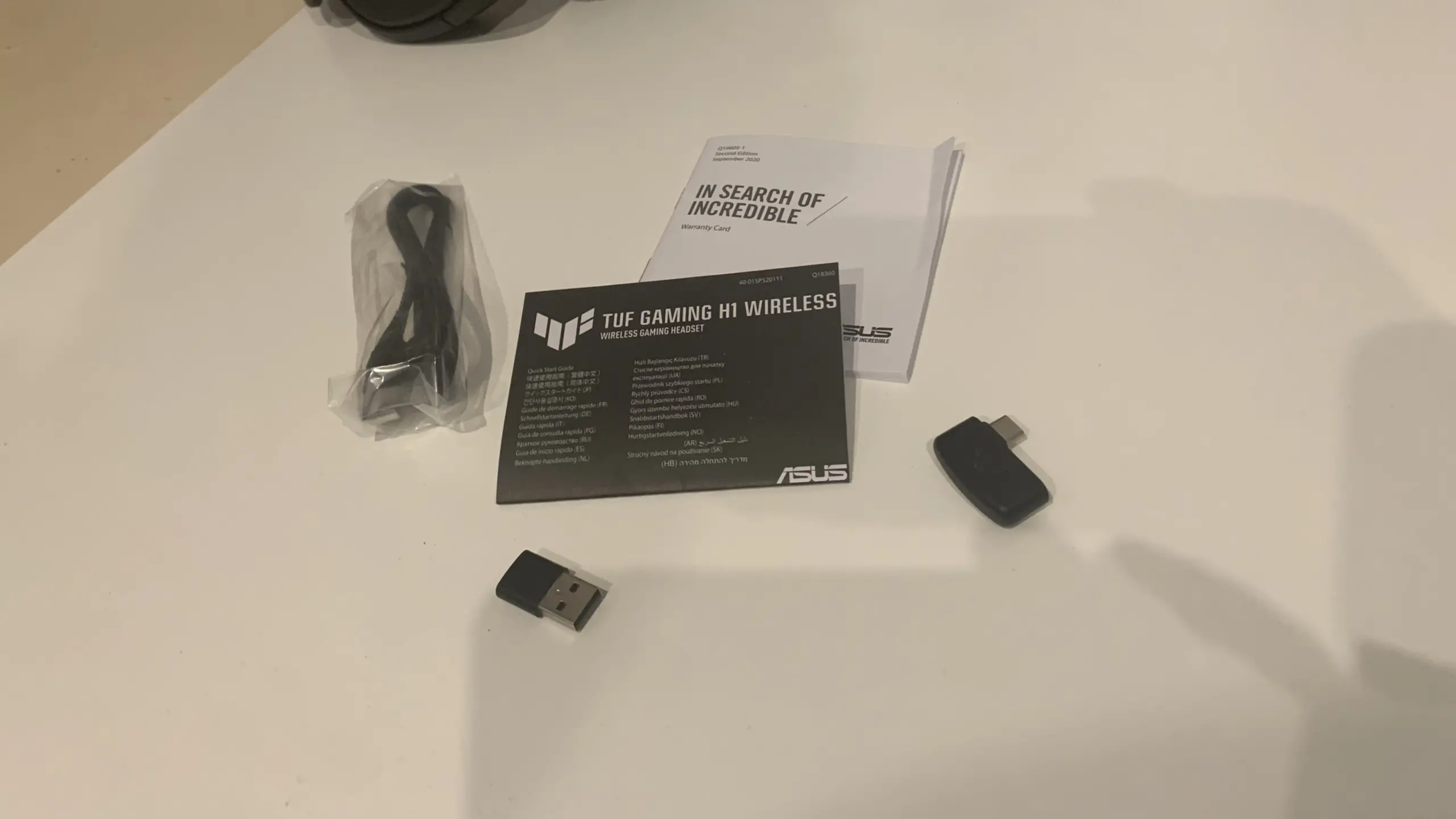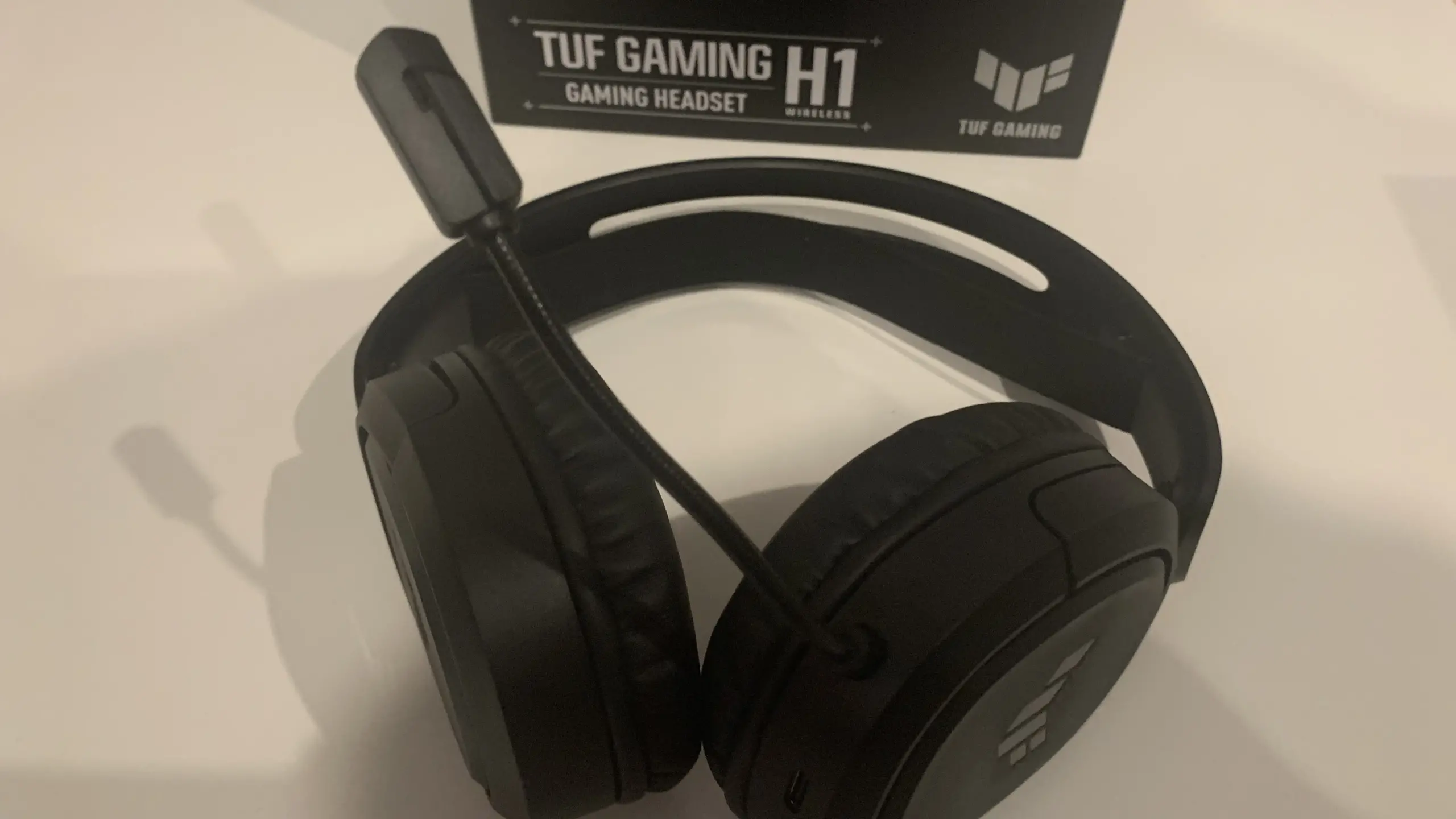
The ASUS TUF Gaming H1 wireless headset is as non-descript as you can get, and it totally fits my design tastes. A good looking headset can only make me so happy, however. When looking at this specific headset, it’s important to see how it performs in various situations, and what kind of experience you, and those listening to you, have when you use it.
ASUS is the company behind the TUF Gaming lineup. ASUS has created quality products for a long time. As a reputable company, the assumption will likely be that this headset will feel good and perform well. Let’s unbox and test this headset to find out. In this review I’ll take a look at how the audio performs and whether it stacks up to the competition. Finally, I’ll talk about the pros and cons of purchasing this product.
Unboxing the ASUS TUF Gaming H1 wireless headset
Over the past few months, I have had the pleasure of reviewing a number of different headsets. When I assess my own experiences with headsets, I feel a strong unboxing experience is important. With the TUF Gaming H1, ASUS has opted to forgo a fancy unboxing experience for more environmentally friendly packaging. There are no fancy lids, inserts, or unnecessary additional items.
When you get the box open, a few information pamphlets will fall out, as will your braided USB-A to USB-C cable for charging. Below these items you’ll find a cardboard holder which encases your new headset. Once you get that open, you’ll find the headset bagged inside. Once the bag is off the headset and the protective film is removed, you are ready to see what your headset is all about. Also included in the box are the USB dongles for connecting your headset to various systems.

ASUS TUF Gaming H1 design
I’ve unboxed a number of headsets, and few have been as nondescript as this one. Once out of the box, your eyes are treated to a matte black headset, with matte black features. The only accent is a faint TUF Gaming logo on each ear cup. I actually really love how basic this looks. It is definitely my style. All the controls and the microphone are on the left ear cup, which is great to see. You have your microphone that can be bent and moved to position it for clear audio, followed by the USB-C port. Next to that is the power button, followed by the volume rocker, and finally a mute button.
You’d be forgiven if you double checked to see if I missed talking about the Bluetooth connectivity button. You didn’t miss anything, Bluetooth is not a feature in this headset. Instead, it connects wirelessly via the included USB-C dongle (more on that later).
The top of the headset features the ski-band comfort system that should, in theory, alleviate some of the weight of the headset itself. The ski band will shape nicely to your head, keeping the hard plastic top band from resting directly on your head. The ski band material is a bit too scratchy for my liking. That said, this will likely only be a problem for a limited number of people.

A quality audio experience
When comparing the 40mm drivers in this headset to the 50mm drivers I’ve found in many other headsets, the difference isn’t as noticeable as I would have imagined. In fact, I was pretty impressed with the audio quality overall. Like many headsets, this one amplifies the lows and highs to make explosions and people walking and talking more pronounced. This is a key feature you sometimes don’t find in low- to mid-range headsets, so it was nice to get that here.
During my experience with the TUF Gaming H1, I hardly noticed I was using 40mm drivers as opposed to 50mm drivers. I’d argue that most individuals—myself included—couldn’t tell you the difference. I have learned that 50mm isn’t always preferable to 40mm in certain situations. That doesn’t matter though. The sound quality is very good, and I never wanted more out of it. When using the headset to play Destiny 2 on my PlayStation 5, it amplified the sounds you want to hear. This includes gunshots, footprints, and people talking. When in use on my Nintendo Switch, the vibrant and upbeat music of Mario Odyssey sounded amazing. So did the subtle tones of The Legend of Zelda: Tears of the Kingdom.
ASUS TUF Gaming H1 microphone
The microphone not being detachable was a bit of a nuisance for me. As someone who doesn’t often chat in games, having it just hanging there near my face was bothersome. I’d argue this is a minor concern, and probably something I’m part of the minority on. The microphone quality is a bit underwhelming to me. However, it does lineup with similar products on the market. On a few occasions, I had friends asking me to repeat what I had said. On other occasions, it cut out completely. When doing a microphone check on my computer, I noticed that depending on where my mouth was positioned, the words I was speaking could become a bit muddled. Still, I’d argue that TUF Gaming H1 is not lagging behind the competition as this price point, but it also isn’t excelling.

Limited missing features of the ASUS TUF Gaming H1
Getting a headset down to a good price requires companies to cut certain features. For the most part, I think that little has been cut to bring this headset down to a good price. However, what has been cut is actually a pretty big deal for me, although it may not be for you.
I tend to use my headsets for a variety of purposes. This includes gaming, listening to music, and watching movies. There is no AUX port to connect the headset directly to a mobile device or Nintendo Switch unit in handheld via a 3.5mm cable. There is also no Bluetooth, so you cannot connect it that way either. The only way to enjoy this headset is by using the included USB-C or USB-A connector. You can pair the headset with your USB-C compatible smartphones, PC, Nintendo Switch or PlayStation consoles.
Final thoughts
After using the ASUS TUF Gaming H1 headset for about two weeks, I was mostly impressed with the job it did. The lack of Bluetooth connectivity, which is a major cost saving measure, really hurts the overall usefulness of this headset for my lifestyle. Still, it’s a solidly built headset that produces quality audio in most situations. While the microphone won’t rival that of more expensive brands, it’s more than OK for daily play, and I’d be surprised if anyone actually complained to you about it. If you enjoy what TUF Gaming is doing, this is probably a headset you’ll love to own.



